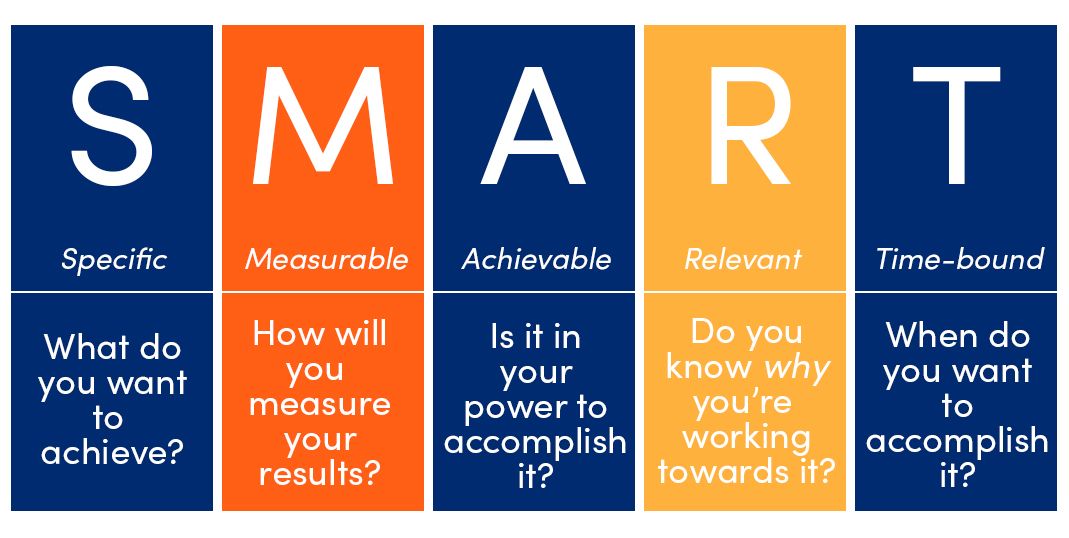It sounds obvious, but e-commerce sales growth is rarely accidental.
You tend to find that e-commerce companies that grow the most have clear goals and work towards them in an agile way. Executing and learning what is working and what is not on a continuous basis.
If aligning your strategy with goals and execution is an area you want to improve for increased sales, then this is what you need to know. In this article you will learn:
- The science of why goal setting is a business process that you need to get right.
- How SMART or OKRs can be used to set goals in your company and teams with examples of OKRs in an e-commerce company.
- The importance of finding a cadence or rhythm when setting goals and aligning your work to achieve them.
- How goals can be managed more effectively to increase the chances of goal success.
Why do goals matter?
Goals are a way of describing the future. Where would we like to be in 90 days from now? What does success look like?
Without goals, our work is not directed and there is no way of knowing whether we have succeeded or not. There is also a lot of research that point at other benefits that include:
- Increased and prolonged focus
- Improved learning
- Enhanced innovations
- Improved collaboration
With all of those benefits, it is always a surprise that you find a large number of companies that set goals in an inconsistent or ad hoc way. And when you examine how goals are set, let’s just say it is often not what you would call the "textbook".
SMART Goals

Good goal setting would use a framework like SMART to structure both the conversations and output of those conversations. SMART stands for Specific, Measurable, Achievable, Relevant, and Time-Bound.
Let's see each of them in more detail.
Specific
Good goals are specific and answer questions like:
- What needs to be accomplished?
- Is this a priority to achieve right now?
- Do you have the resources to achieve it?
Once you have these, you can move on to the next stages of SMART.
Measurable
Once you’ve been able to be specific about what you must achieve, it is time to quantify your goals by making success measurable. If you can't or don't know how to measure your progress, how will you be able to improve and achieve anything at all?
Achievable
Sometimes the A of SMART is ‘Attainable’ but the intent is the same - to create a goal that can actually be achieved. This is one key area where SMART differs from OKRs which encourage ambition as a means of unlocking innovation, focus, and learning.
Relevant
Having a relevant goal means being able to articulate the ‘why’ of the goal, not just the ‘what’. Anyone reading the SMART goal should know why you’ve proposed or are working towards it.
Time-bound
Goals need end dates to focus on and should not be open-ended. That does not mean that your goal can’t be continued after that end date. You can choose to continue a goal at the end of a quarter for another quarter for example. But you should work in cycles that focus and align teams like you would with the other popular goal-setting framework - OKRs.
Objectives & Key Results - OKRs
If you want to get even better and more towards great goal setting then you would use a framework like OKRs.
If OKRs are new to you, the elevator pitch would be that OKR stands for Objective and Key Results and is how companies set measurable goals that emphasize alignment, transparency, ambition, and frequent discussions via check-ins and team meetings.
They are the framework used by Google and Amazon and pretty much every fast growing tech company for that reason.
The structure of an OKR is as follows:
- Objective - Describes what you want to achieve
- Key Result 1 - Describes how you propose to measure the achievement
- Key Result 2 - Describes how you propose to measure the achievement
You typically create 1 - 4 key results per objective with achievement measurement often being a KPI or the achievement of a Milestone.
What OKRs also have in the framework is guidance on being FAST which means:
- F - Frequently discussed
- A - Ambitious
- S - Specific and Measurable
- T - Transparent
This is because goals that are set and forgotten tend to be missed. Hard goals get teams to achieve more than easy goals, and transparency is important for both alignment and in-team and cross-team accountability.
One final attribute OKRs have that will be illustrated with examples is the ability to align in cascades. This facilitates a top-down and bottom-up approach to goal setting where leadership can set what are often ambitious annual OKRs and teams can then form around these to propose goals one quarter at a time designed to support the achievement of high level OKRs.
Setting OKRs for e-commerce
Because OKRs have alignment as a key feature you can connect goals together.
This is often called a cascade. What sits at the top is often a unifying OKR. For an e-commerce company, this could look like this:
- 2022
- Move from market challenger to leader
- Increase choice by offering 10K new SKU
- Grow AOV from $90 to $140
- Increase Average Order Frequency from 6 to 10 orders per year
- Acquire 50K new customers profitably
Different teams will be able to look, debate and propose a Q1 2022 OKR that would support the achievement of the OKR. For example, marketing team might propose an OKR to drive affiliate marketing:
- Q1 2022
- Scale affiliate to scale new customer acquisition
- Get affiliate marketing to provide 5K new customers
- Keep affiliate CPAs under $40 per customer
In this example, the marketing team is likely to add other OKRs to target Average Order Value and Frequency but perhaps not in Q1 if they are not going to have the resources to work on that.
This is because OKRs are like agile working, only those goals that are both a priority and can be committed to because there is time and resources available should be active. Having too many change goals that spread resources too thinly usually results in broad underachievement.
Aligning execution
If OKRs describe the outcomes of a good year or quarter, the ‘doing’ might be managed in a team project, to-do list/kanban board. Ideas can be kept on a backlog and the best ones assigned and moved forward to get completed.
Having execution as a separate layer to goals also ensures learning is optimized as you get to see the outcomes of your work.
Cadence
Goals need to have their progress updated and any issues being faced need to be shared and addressed frequently, ideally weekly. This ensures that the execution can be aligned with priorities, understood and completed in a timely manner.
You can use OKR software (for instance, ZOKRI) to easily manage all stages of goal and execution planning with check-in processes and meeting templates ready to use. Get these right and you know the right conversations are happening at the right cadence.
How not to manage your goals?
Goal management is a key part of your business planning processes. Goals need to be understood, frequently updated and talked about, and there needs to be goal, role and plan clarity across the business.
Put simply, goal setting and management is one of those business processes that great businesses do well. For this reason, it is always useful to describe what not so good looks like to encourage you to not think that you have got this covered.
Budgets and forecasts
Great for accounts teams and investors but these are not very good for teams to work with, share, discuss and align with on an ongoing basis. Every company has them, but they are not a goal-setting framework that achieves high levels of engagement, achievement and supports agile working practices.
KPI dashboards
Metrics are a key part of any goal discussion and are used in some goals but they are not your goals. They are what you track to diagnose issues, see opportunities and ensure what is already good is kept that way.
Team software solutions
Whether a CRM, Google Analytics, or another tool, these important software tools are not how and where you set goals either. They are a subset of your KPIs and the chances are no other teams can see them so they are in a silo.
Spreadsheets
Goal setting spreadsheets are OK if you are really small. But as you grow, having lots of teams engage with a sheet or series of connected spreadsheets becomes hard and nearly always will end up with goal processes like check-ins not being followed.
Solution: goal management software
There are a number of goal-setting platforms out there that can allow you to use OKRs, SMART, FAST, or a hybrid of those and create your own goal-setting system that keeps your whole company on track.
Direction and velocity
There is no doubt that great goal setting provides the direction companies need and increases performance velocity.
If you feel that there are improvements to be made, then there are resources you can read, and coaching that is designed to accelerate the learning curve and be cost-effective. Then there is every chance that 2022’s forecasts will be smashed.
This is a guest post by Matt Roberts.
About author:
Matt Roberts is the co-founder of OKR Software ZOKRI and helps companies of all sizes upgrade their goals setting as a means of achieving growth.
✍️ Want to write for us? Check out our guest blogging guidelines here.




